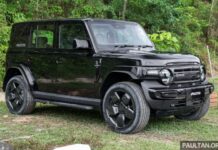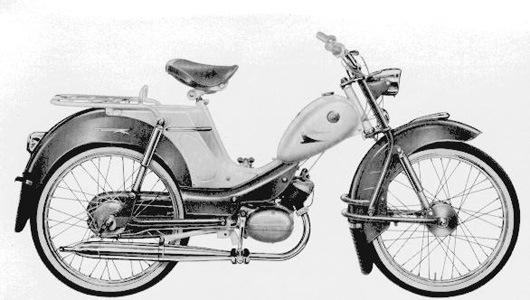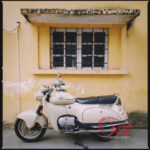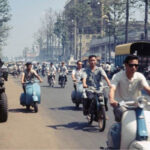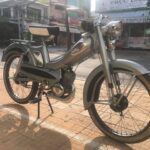Bicycles and motorbikes were the most popular modes of transportation in the southern region of Vietnam before 1975, and they remain prevalent today. This article offers a comprehensive overview of the motorbikes that were commonly seen in the southern region prior to 1975.
>> You can leave comments on this article at http://www.facebook.com/Autodaily
Mobylette, Vélosolex – French elegance
If you were living in the southern region of Vietnam, you would undoubtedly be familiar with Mobylette. Since Vietnam was once a French colony, Mobylette motorcycles were a common sight on the streets. Manufactured by Motobécane, these bikes were popularly known as Mobylette rather than Motobécane.
In Vietnam, there were two types of Mobylette motorcycles: the yellow Mobylette and the blue Mobylette. Both featured a 49.99cc engine and were classified as vélomoteur, which meant that no driver’s license was required. The small yellow Mobylette had only a front suspension fork, while the larger blue Mobylette had suspension forks both at the front and rear, offering a smoother ride and a higher price tag.
Over the years, Mobylette motorcycles have remained largely unchanged. In the 1950s, they featured a tube frame, which was later replaced by a stamped metal frame in the 1960s. The color of the Mobylette also varied, with the yellow model being replaced by a gray version. These motorcycles were designed to be user-friendly, requiring no gear shifting and featuring an automatic clutch. The speed of the bike could be controlled simply by turning the throttle. Starting the engine was as easy as pedaling fast, and if pedaling didn’t start the engine, a latch near the rear wheel could be moved to separate the engine from the rear wheel, allowing the bike to be pushed home.

If you’ve ever thought about adding a small engine to your bicycle so you wouldn’t have to pedal, someone has already turned that idea into reality with Vélosolex. Vélosolex is a bicycle with an engine attached to the front wheel. The engine rotates a stone-like object underneath it. When the rider pulls the front lever, the stone-like object lifts off the front wheel, allowing the bike to be pedaled like a regular bicycle. Once the pedaling reaches a certain speed, lowering the lever engages the engine, which powers the bike with the front wheel. Once the bike is running smoothly, the rider can place their feet on the middle platform for a comfortable seating position. From a simple concept that emerged in the 20th century, Vélosolex bikes have endured into the 21st century.

Due to their simplicity and lightweight design, Mobylette and Vélosolex motorcycles were particularly popular among students, school children, and women.
Vespa, Lambretta – Stylish Italian
In a higher category are the Italian scooters: Vespa and Lambretta. These scooters featured engines larger than 50cc, starting from 125cc or 150cc up to 200cc, depending on the model. They were no longer classified as vélomoteur. Users had to be over 18 and possess a driver’s license. This is why Vespa and Lambretta riders were usually middle-aged individuals with relatively high living standards, as these scooters were more expensive.

Vespa motorcycles have undergone minimal changes throughout the years. The frame is made of stamped metal and has an egg-like shape to enhance its durability. The engine is positioned on the right side, while the left side serves as a storage compartment. As a result, Vespa bikes lean slightly to the right when in motion due to the heavier right side.
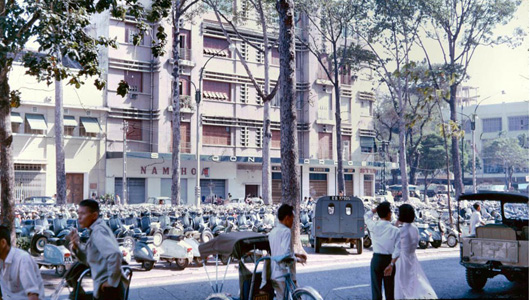
Lambretta motorcycles may resemble Vespas, but their construction is different. The frame is made of welded iron tubes, while the engine is covered with an outer layer of sheet metal. In the 1960s, Lambretta bikes had a curved design, which later evolved into a more straight and elegant design in the late 1960s and 1970s, following fashion trends of the time. Both Vespa and Lambretta motorcycles required manual gear shifting by pressing the clutch and turning to change gears.
Goebel, Sachs, Puch – German power
Since the late 1950s, the southern region also imported German motorcycles such as Goebel, Sachs, and Puch. These motorcycles shared common features such as fuel tanks placed in front of the rider, manual gear shifting, front and rear suspensions, and 50cc engines that classified them as vélomoteur, eliminating the need for a driver’s license.
Each bike possessed its own unique features. Puch motorcycles were enclosed in an aluminum casing with a running fan for cooling, allowing the engine to remain cool even at idle. As geared bikes, despite only having 50cc engines, German motorcycles had more power than Mobylette motorcycles in gears 1 and 2. They were also capable of towing carts with up to four passengers and cargo. Puch and Sachs motorcycles are still manufactured today.
>> Part 2: What did people in Saigon ride before 1975? (Part 2)
Th? Ð?t (According to PL&XH)



